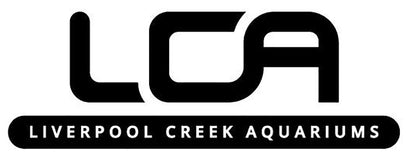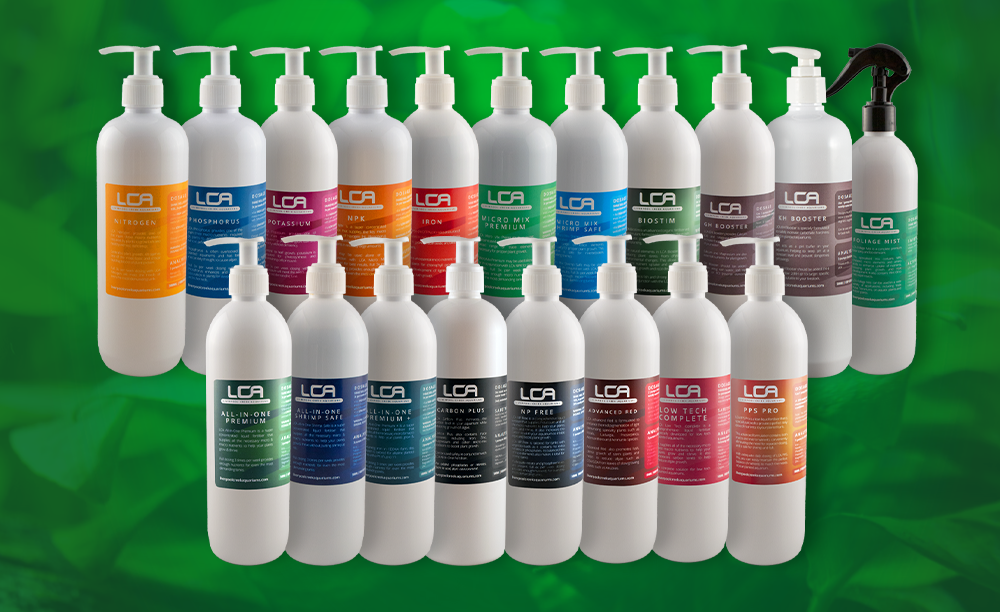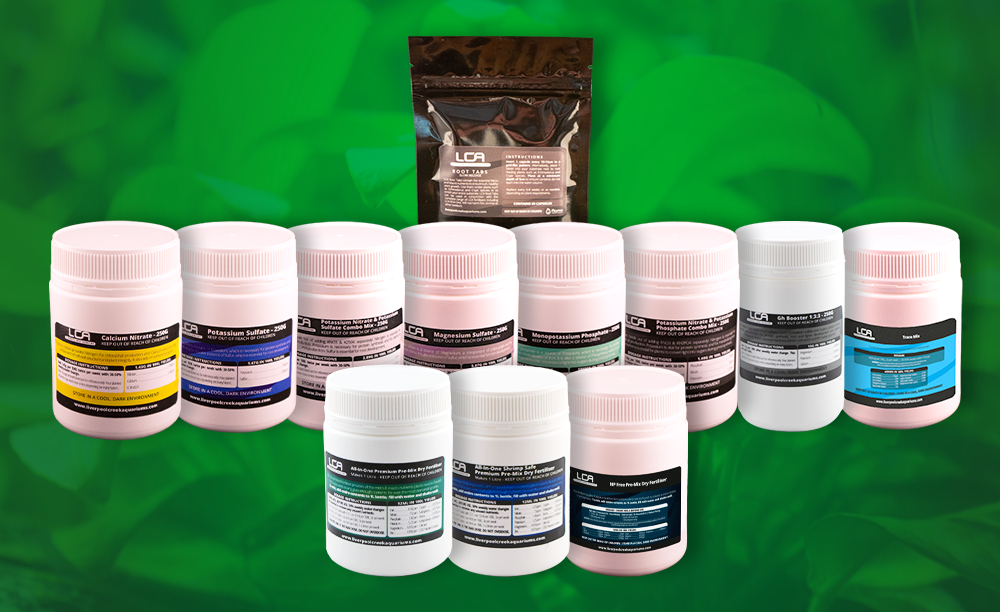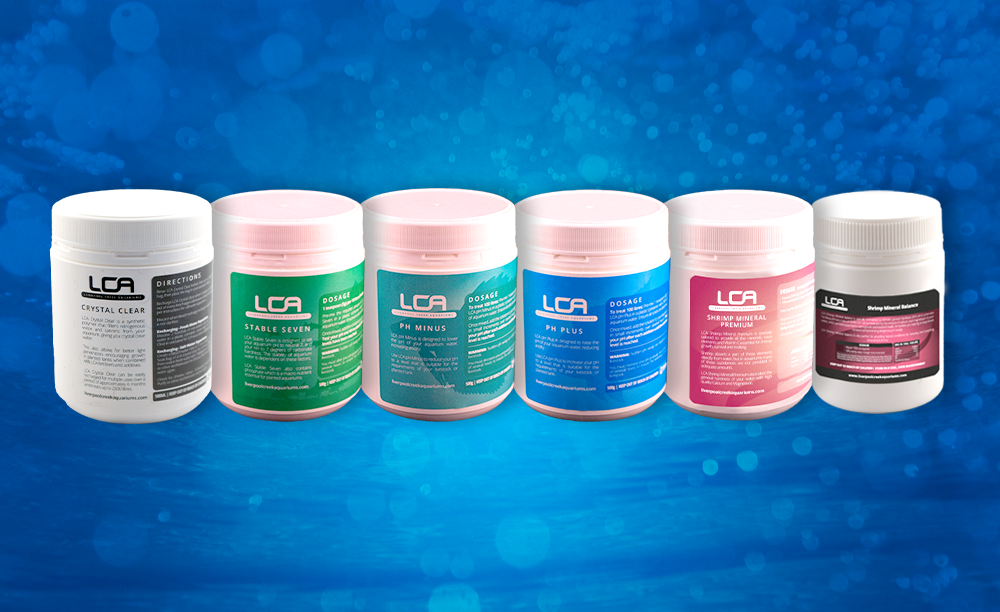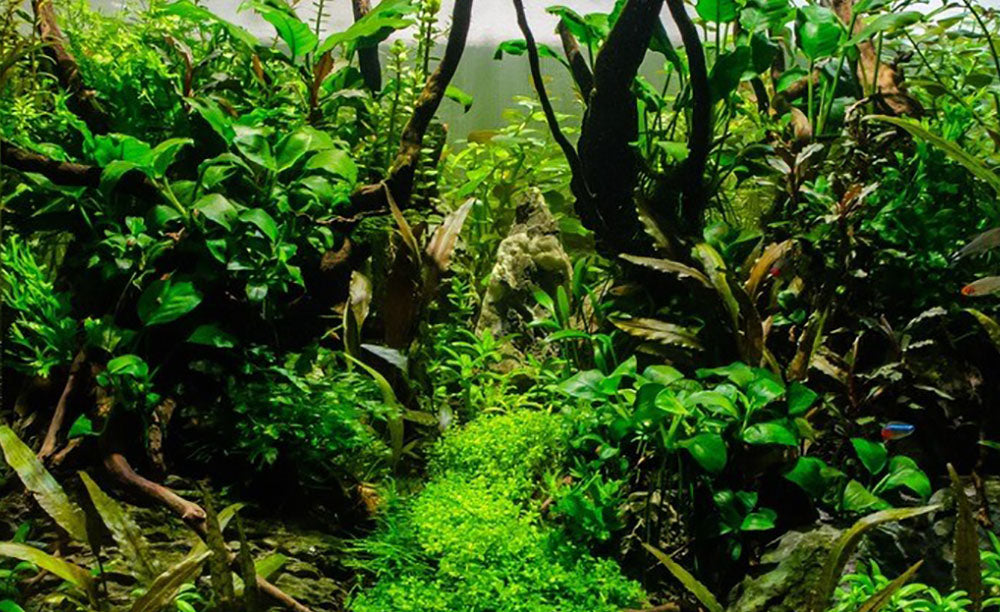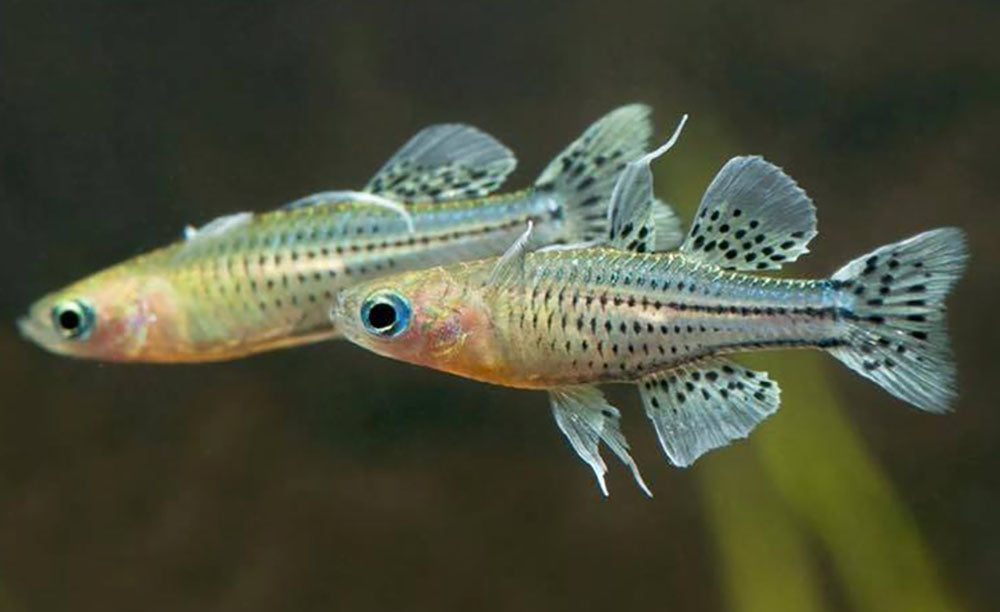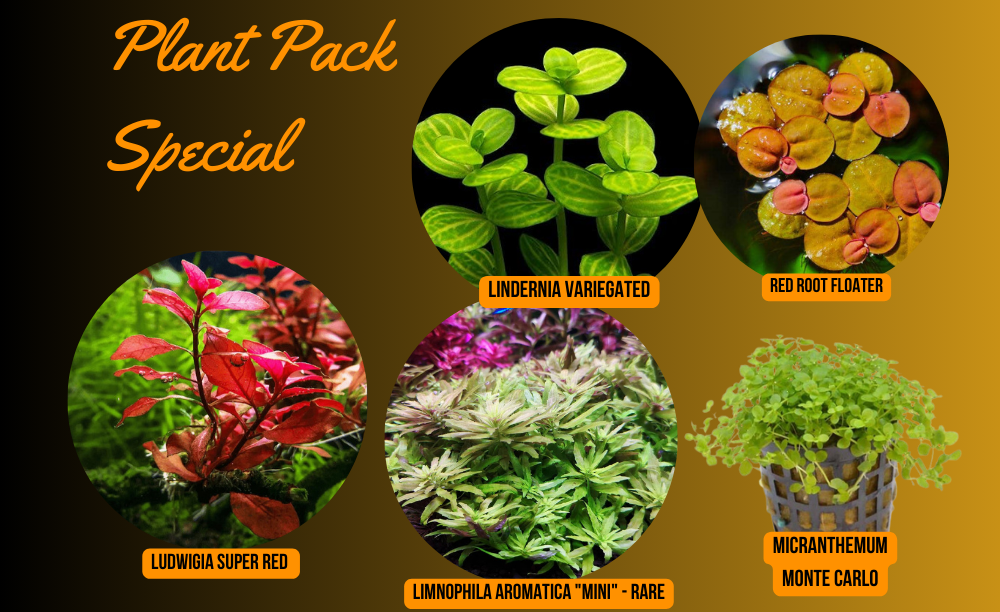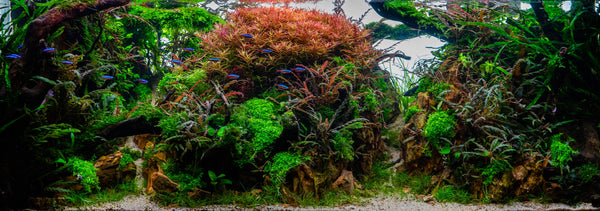Your Cart is Empty
Best Sellers
A great place to find something special from our beautiful aquarium plant selections. Too hard to choose? Just grab one of our fantastic Plant Packs! All our packs have a selection of complementary plants that will look great together or be an awesome addition to your current aqua-scape.
*Pictures are for reference only. Aquatic plants adapt and change depending on their tank environment and the many variables ie lighting, fertilisers, CO2, etc
Buy in Bulk and save!
Dreaming of a weekend spent aquascaping? Have a new or large tank that needs some foreground attention?
Check out our value packs - the more you buy the more you save!
5 Pots - Save 15%
10 Pots - Save 20%
*Pictures are for reference only. Aquatic plants adapt and change depending on their tank environment and the many variables ie lighting, fertilisers, CO2, etc
All In ONE Premium
Shop Now
LCA's All in-One Premium Liquid Fertiliser is a super concentrated solution that supplies all the necessary micro and macro nutrients to ensure that your plants grow and develop in a healthy way. It has high concentration levels of Iron in DTPA form which means it is specially formulated for tanks with a Ph level of up to 7.5 Full 3x per week dosing provides enough Nitrogen, Phosphorus, Potassium, Iron and other important key trace elements for even the most demanding tanks.
If you have soft water or are using RO/DI water you should also be using LCA's GH+Booster to ensure proper magnesium and calcium levels following a water change.
*Safe to use on fish, snail and shrimp* ( note if you have sensitive shrimps please use the Shrimp Safe Version).
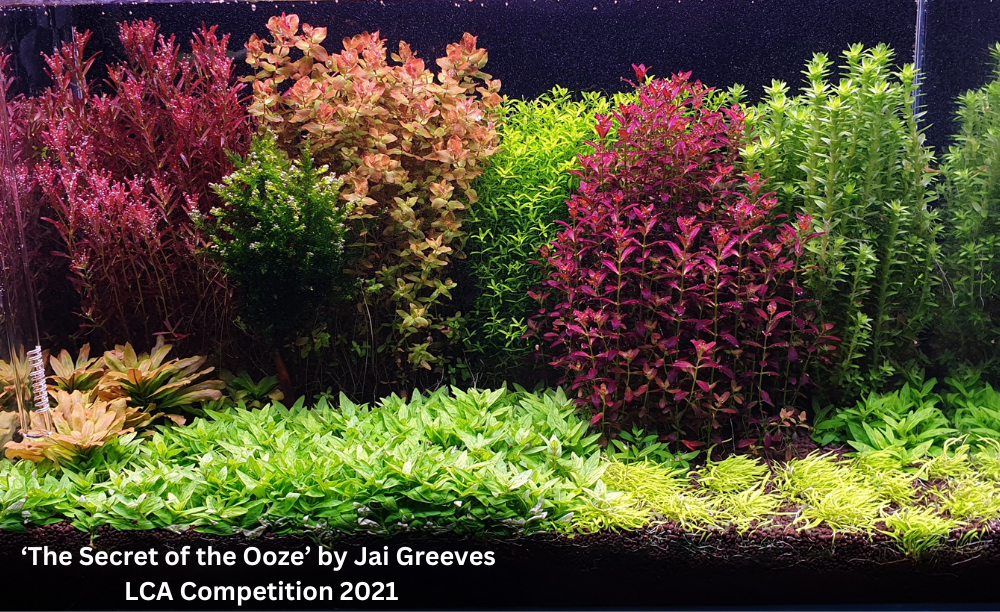
Plant Maintenance
Planted aquariums can be a beautiful addition to your home, but the plants require regular maintenance to keep them looking their best.
Trimming
The thing about aquatic plants is that you can’t prune them continuously and expect new shoots. Aquatic plant species are always in the process of shedding old growth to put energy into new shoots and leaves. If you trim the top of your stem plants to keep them short, eventually those old stems might not provide any new growth as they will be too far-gone to do much of anything.
Read MoreTrimming
The thing about aquatic plants is that you can’t prune them continuously and expect new shoots. Aquatic plant species are always in the process of shedding old growth to put energy into new shoots and leaves. If you trim the top of your stem plants to keep them short, eventually those old stems might not provide any new growth as they will be too far-gone to do much of anything.
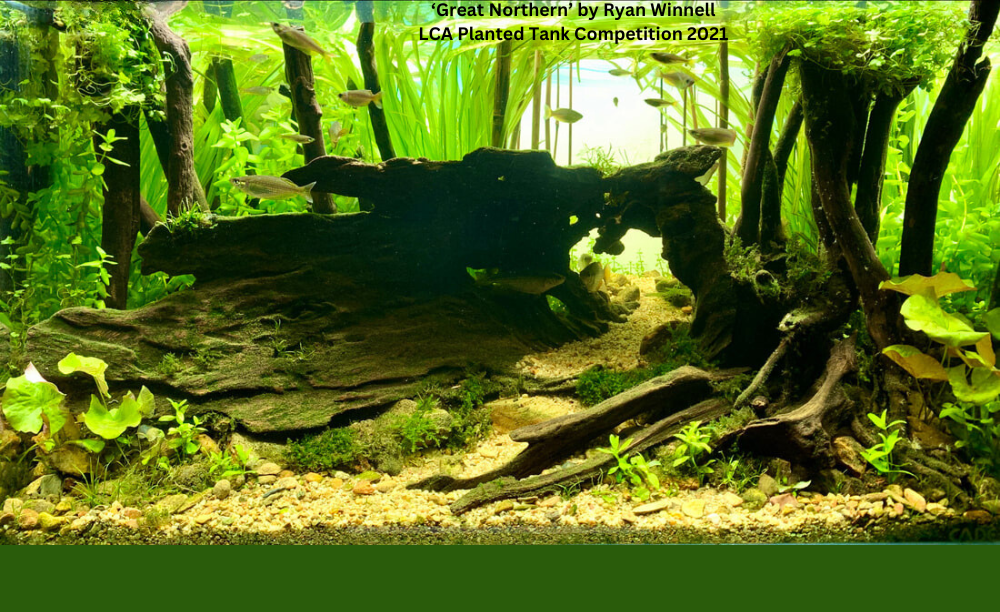
Algae in Low Tech Tank
So - you’ve started a new planted aquarium, it’s cycling away, you’ve put in some plants and hardscape and everything is looking great.
Then one day you look in to admire your hard work and there is algae on your leaves, diatoms on your substrate, and generally things just look like a huge mess.
Your immediate reaction will be to make some changes to your lighting, or your fertilisation, or throw in some algaecide, maybe mess with some other parameters you feel might be the root of the issue.
But wait! Sometimes the key to beating algae is to simply just wait it out.
Read MoreThen one day you look in to admire your hard work and there is algae on your leaves, diatoms on your substrate, and generally things just look like a huge mess.
Your immediate reaction will be to make some changes to your lighting, or your fertilisation, or throw in some algaecide, maybe mess with some other parameters you feel might be the root of the issue.
But wait! Sometimes the key to beating algae is to simply just wait it out.
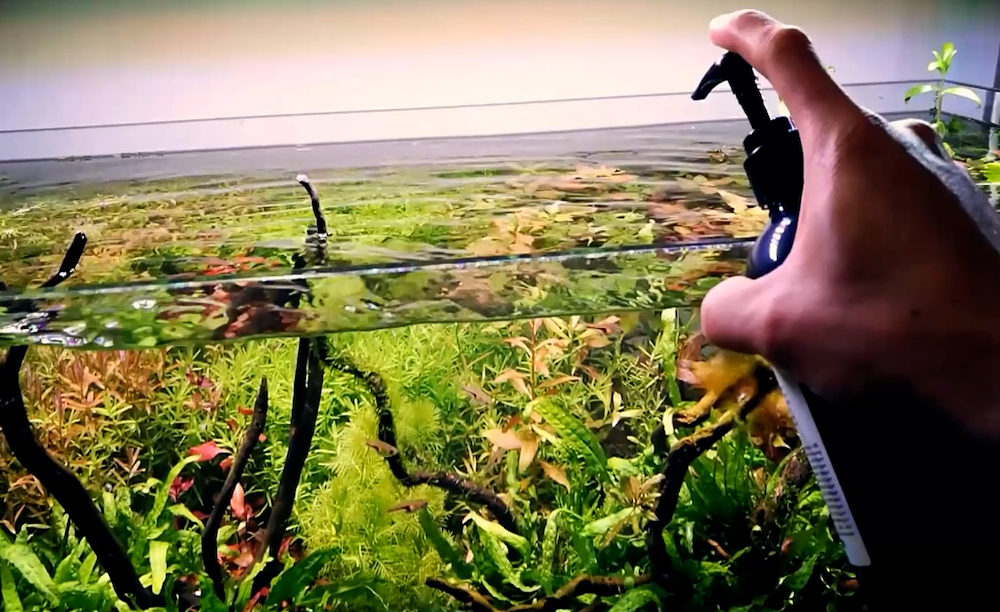
When is the best time to start dosing your aquarium with fertiliser?
Have you put any plants in your aquarium? Then start dosing!
Even if you have a nutrient-rich substrate, such as aquasoil or a DIY dirted solution, you need to dose liquid fertiliser to your water column.
Why is that? These enriched substrates do hold a lot of nutrients and will be leeching ammonia and/or nitrates for the first few weeks after setting up your aquarium, but won’t be doing so at a rate sufficient for your plants’ needs. These substrates typically don’t supply enough potassium or micronutrients in the early stages either.
Read MoreEven if you have a nutrient-rich substrate, such as aquasoil or a DIY dirted solution, you need to dose liquid fertiliser to your water column.
Why is that? These enriched substrates do hold a lot of nutrients and will be leeching ammonia and/or nitrates for the first few weeks after setting up your aquarium, but won’t be doing so at a rate sufficient for your plants’ needs. These substrates typically don’t supply enough potassium or micronutrients in the early stages either.
